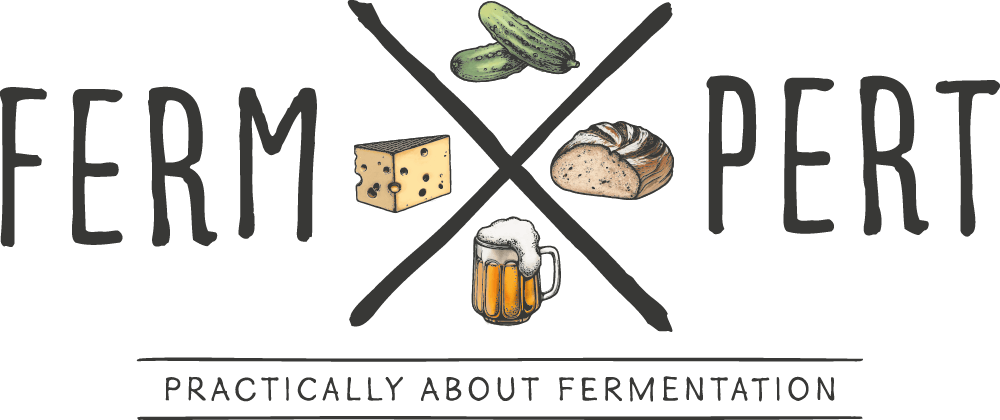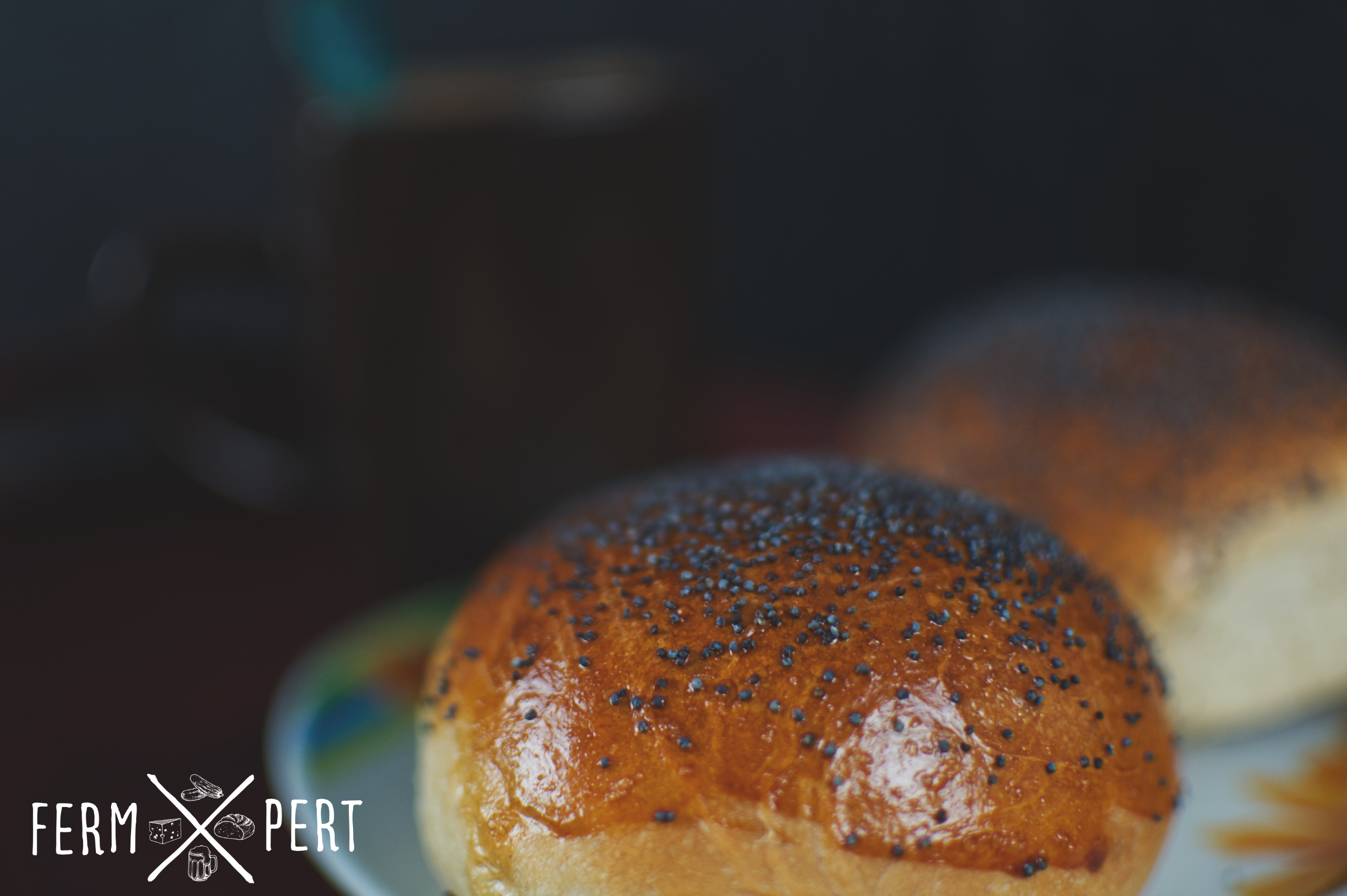There is a certain confectionery in my home town. Or was, as it’s entirely possible it doesn’t exist anymore. Some thirty years ago I’d pass next to it on my way to and from school. Initially, my mother would buy me sweet rolls, then I started spending my pocket money there. My choice was usually a butter roll. Not exactly a sweet roll, not exactly a brioche. Not particularly sweet, not particularly buttery, but nonetheless delicious, soft and fluffy. It really showed that it’s not the richness of ingredients that makes a good recipe, but rather a perfect procedure. I’m sharing such a recipe today.
Recipe
Makes 10 rolls.
- 500 g strong white wheat flour (at least 12% protein content)
- 50 g white sugar
- 290 g whole milk
- 50 g melted unsalted butter
- 7 g fresh or 3 g dried baker’s yeast
- 1 large egg (around 60 g), whisked
- 11 g salt
- poppy seeds
Dissolve the yeast in the milk, then add butter, the majority of the egg (leave some to serve as egg wash later on), flour, salt and sugar. Mix until the dough comes together, then flip it on the counter and knead until the gluten network is well developed (usually around 10 mintes). A stand mixer can be used as well.
Place the kneaded dough back in its bowl, cover it and let it prove until it at least doubles in size. After that, knock the dough back and divide it into 10 pieces of equal weight. Fold each ball onto itself and roll it against the counter to form tight dough balls. Place them on a baking tray lined with parchment paper. Prove until they’re nicely inflated.
Preheat the oven to 205°C (400°F). With a brush, coat each roll with egg wash using the remainder of the whisked egg. Sprinkle seeds on top. Bake for 15-20 minutes until the rolls turn golden.
Notes
It’s possible to experiment with this recipe. More butter and/or sugar can be added to accentuate the buttery and sweet flavours. Some of the white flour can be substituted with wholemeal flour to incorporate some fibre into the rolls, as well as enrich the flavour a bit. Poppy seeds can be swapped out for something else, like sesame.
It’s a good idea to place the dough balls relatively closely together in three rows: 3, 4 and 3 rolls. This way, as they prove, their sides will join, which is visually pleasing and also helps the rolls prove upwards instead of outwards.
Video transcription
When I went to primary school, my mum would often buy my butter rolls for my midday snack. Their taste stayed in my memory for years and made me look for a recipe that would recreate the memory. I finally managed to successfully modify a recipe by a well known Polish confectioner, Tomasz Deker.
To make butter rolls, I need strong white wheat flour, full milk, sugar, salt, yeast, an egg and, of course, butter. Exact proportions can be found in the recipe on the blog.
I start by pouring milk in a bowl. Then I add some fresh yeast and stir it in. It’s OK to use dried yeast too, but its amount should then be cut in half. Next, I whisk a large egg and pour in most of it, leaving just enough to serve as an egg wash later on. Now I add melted butter. Time for dry ingredients. Flour goes in first. It’s strong white wheat flour, with a high protein content. Finally, I add salt and sugar.
I stir the ingredients until they roughly come together. Then I flip the dough on the counter and start kneading. I don’t use any additional flour. The dough quickly comes together and isn’t sticky at all. It’s not too soft, so kneading requires some strength. But hey, I need to burn the calories I’m putting back in the rolls!
I knead until a strong gluten network is formed. I verify the gluten formation using the window pane test: I should be able to stretch the dough to become translucent before it breaks. Here I can see the dough is not yet ready. But now, after around 10 minutes of kneading, I’m able to stretch the dough very thin before it tears. The dough is ready to be put back into its bowl where it will prove until it at least doubles its volume. It’s important to cover the bowl though, as the dough isn’t very moist to begin with and I don’t want it to dry out even more.
During the initial prove, amylase that is present in the flour starts to break starch down to simpler carbohydrates which, along with the sugar I added, are a food source for the yeast, which in turn produce ethanol and carbon dioxide. It’s the carbon dioxide that inflates the dough and remains inside it in the form of alveoli, trapped inside by the strong gluten network.
I check the dough and it looks well risen. Time to knock it back. The yeast will inflate it back with no issues, so there’s no need to keep the air in.
I weigh the dough and divide the mass by 10 to get the mass of a single roll. Then I proceed to weighing out portions of dough that will become individual rolls.
I take each piece of dough in my palm and roll it against the counter to form a tight ball. I then place it on a baking sheet lined with parchment paper. [PAUSE] It’s time to final prove the rolls.
The rolls have risen nicely, so it’s time to coat them with egg wash while the oven is preheating. I use the remainder of the whisked egg. Once I’m done, I sprinkle some poppy seeds over the rolls. Sesame seeds would have worked too, but my childhood’s butter rolls always came with poppy seeds on top. [PAUSE] I put the rolls in the oven and wait until they’re nice and golden. It should take around 15 to 20 minutes.
And here they are. I place the rolls on a cooling rack and wait until they cool down a bit. I think they taste best with no additions, just with the morning coffee. But it’s perfectly OK to have them with a bit of jam or honey too. They’re not overly sweet and the butter gives them a rather subtle taste. Ideal, in my opinion.

